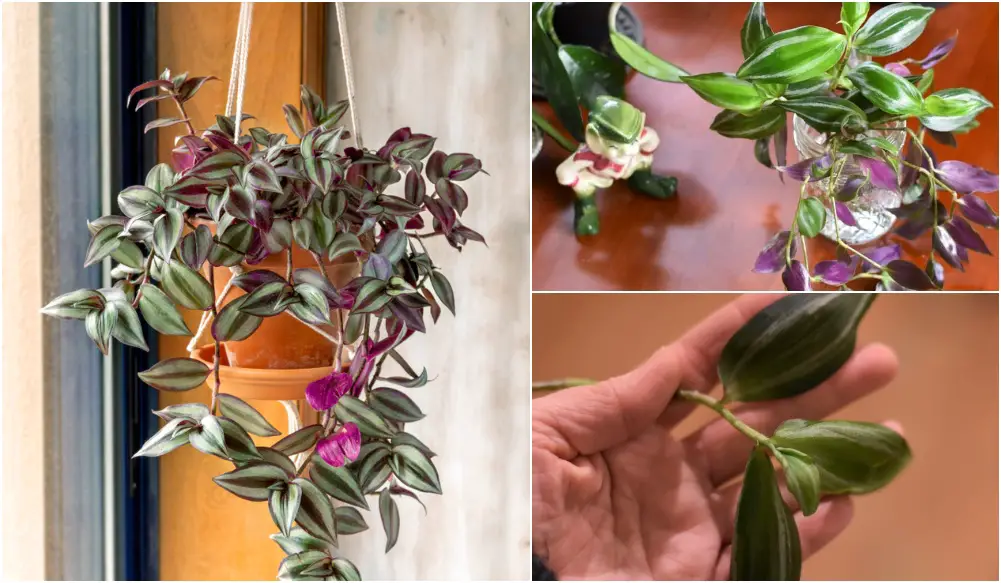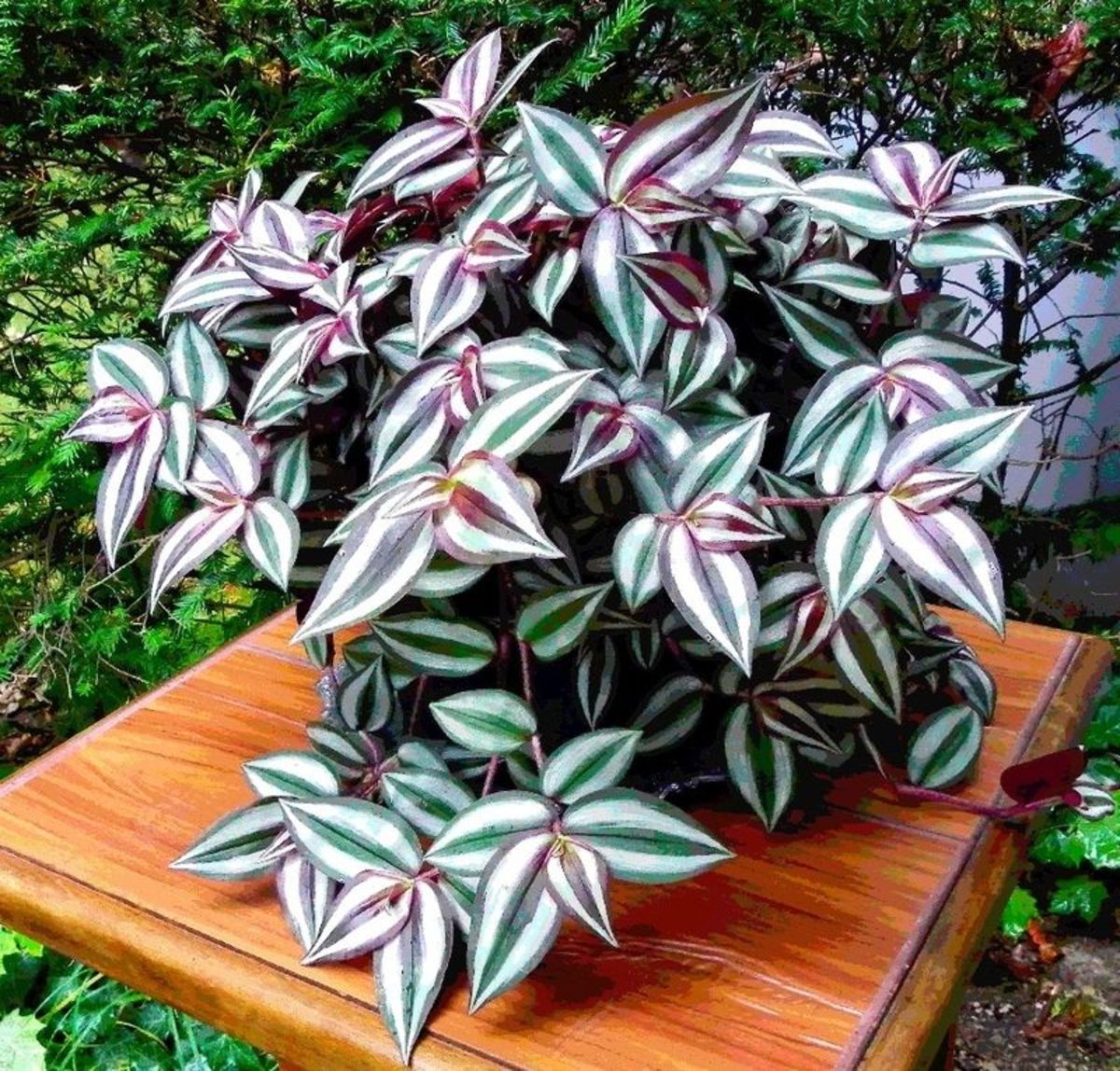Wandering Jew is a beloved houseplant that requires minimal care. Not only that, but you can even use it as an attractive ground cover in your landscape!
However, there are some common issues that may arise. Here are some helpful strategies for handling them:
Watering
Tradescantia zebrina, commonly known as Wandering Jew, is an easy-to-care for houseplant with variegated leaves and vines that thrives in bright indirect light and requires little watering – making it the ideal choice for beginners or those without enough time or knowledge to maintain a plant properly.
Hanging baskets or pedestals often feature this plant due to its vine-like growth habit and vibrant colors. Indoors, it is suitable due to its hardiness and lack of diseases that affect other plants.
Though not needing much care, the wandering jew does need regular watering and soil that remains slightly moist but not saturated. Overwatering can lead to root rot issues for these plants.
If your wandering jew has rot issues, try trimming off any affected sections and repotting into fresh soil. It is better to repot them and discard those which are infected than let rotting soil continue to harm the plant – otherwise, the entire thing could die.
When making your own potting mix, opt for one that drains easily and doesn’t contain too much fertilizer. Also, don’t be afraid to water more frequently if the soil feels dry. If creating your own blend is your preference, combine perlite, peat moss, and organic compost together.
Care for this plant is relatively straightforward, and with proper attention you can keep it looking fantastic year-round. However, no plant is immune to issues; you may need to repot your wandering jew every couple of years and ensure that it gets enough light and humidity.
Light
The Wandering Jew Plant, also known as an inch plant or tradescantia, is a popular houseplant due to its ease of care and ease of growth. Furthermore, these hardy creatures can survive in many different environmental conditions.
When growing a Wandering Jew plant indoors, it is essential to monitor its light exposure. Doing so will help ensure your plant continues to flourish and retain its vibrant color.
In general, this plant thrives best with 6 hours of direct or partial sunlight daily. You can achieve this with an indoor LED grow light or by placing it near an east or west-facing window.
If your wandering jew plant receives too much direct sun, its foliage may begin to fade. In such cases, it would be beneficial to move it into an area with more indirect light.
It’s essential to check the soil for signs of root rot, as wandering jew plants are vulnerable to this disease. To avoid root rot, water your wandering jew plant only when the top inch feels dry to touch.
As with most plants, it’s wise to monitor your wandering jew plant’s growth regularly and trim any leggy branches that are beginning to form. Not only will pruning make the plant appear more attractive but it will also promote a fuller, bushier form of growth.
If your jew plant becomes too leggy or sparse, you can propagate new plants by taking stem cuttings. Be sure to remove the lower 1-2 leaves from the stem and dip the cut end in rooting hormone; this will encourage root growth and boost its chances of becoming a healthy plant.

Humidity
Humidity, or water vapor content in the air, is crucial for many plants to have a healthy level. This helps guard them against developing diseases like root rot.
To increase humidity in your environment, consider adding a humidifier or misting your plant frequently. You may also keep a weather log to observe how often relative humidity changes.
Maintaining a high humidity level in your home can help protect your plants from drying out too quickly, which is often the cause of browning leaves. Furthermore, keeping the air around your house relatively moist will protect it from pests like spider mites and mealybugs.
When selecting the ideal potting soil, opt for something with excellent drainage and moisture retention. Wandering Jew prefers a loose, porous mixture so opt for a pot with an ample drainage hole and mix of standard houseplant potting soil and peat moss.
Repotting: As your wandering jew’s foliage begins to fill out and roots begin to protrude from its bottom holes, it’s time for a repotting. Gently take your plant from its current container and transfer it into one that’s at least 1-2 inches larger than before.
Propagation: Growing this plant is easy! Simply take a cutting from an established vine and place it in either a jar of water or pot with moistened soil. Within a few weeks, you should see new roots emerge.
Like other indoor plants, wandering jew isn’t fond of being overwatered. Still, it needs regular watering to stay healthy; just make sure the soil remains evenly moist (but not soaking wet) at all times.
Pruning
If your jew plant is growing too large for comfort, you can prune it back and encourage bushier growth by pinching off new stems and trimming away weak, dead or broken leaves. Additionally, you may want to trim away long tendrils that appear to be trailing behind the main plant.
The Wandering Jew Plant is an attractive houseplant native to Mexico and Central America that features heart-shaped leaves with purple stripes and a silvery sheen.
Flowers of this species can be white, pink or violet and while they may seem inconsequential, they offer a striking visual contrast against the foliage.
This plant requires bright indirect lighting to maintain its vibrant colors and healthy growth. Avoid too much direct sunlight as it can burn the delicate leaves.
For optimal results, place it in a window that receives plenty of bright indirect light in both morning and afternoon. Switch it up if the color begins to fade.
To propagate your wandering jew plant, take stem cuttings during the spring, summer or fall and remove all but a few leaves from each cut. Place these into a pot of moistened potting soil in a warm, sunny location.
When propagating plants, it’s essential to follow the proper care instructions for each type. This includes watering the soil and keeping it well-drained.
Fertilizing your jew plant with some organic plant food will help it flourish. Choose this method instead of chemical fertilizers for healthier and faster growth.
Many insects can wreak havoc on your Wandering Jew plant, such as spider mites and aphids. If left unchecked, these sap-sucking pests can do serious damage. These problems are most prevalent indoors but also outdoors in warmer climates. Applying an insecticidal soap or neem oil will eliminate these pesky pests and protect your precious jew plant from further harm.
Repotting
Wandering jew is a relatively low maintenance houseplant with easy care requirements, making it an ideal choice for hanging baskets or low maintenance gardens. With its trailing growth pattern, this plant makes perfect addition to any low maintenance garden space.
This plant’s foliage is glossy and oval in shape, with a dark green hue. It produces triangular-shaped, three-petaled white flowers.
Wandering jews are one of the simplest plants to propagate, making them a great choice for beginners. You can grow them from stem cuttings or from the mother plant itself.
These plants can grow rapidly, so it’s wise to prune them regularly. Doing so keeps the stems tidy and encourages new shoots beneath them.
They don’t require special soil, and will thrive in a basic potting mix that drains well. However, if they become excessively thirsty, it may be beneficial to amend their mix by adding peat moss or coco coir.
If your plants are too dry, water them more frequently until the top inch of soil is moistened again. Furthermore, remember that succulents prefer a humid environment; use a humidifier during winter to maintain this state of health.
It’s also wise to inspect your leaves for bugs. If you discover any pests, take immediate action and treat them promptly.
Another frequent issue for this plant is rot, which causes the bottom portion of its stems to turn black and become mushy. Fortunately, this issue is easy to correct: just remove any affected foliage and you’re good to go!
Cut away the bottom sections of stems to help prevent disease spread throughout your plant. Then, repot it in fresh soil.
Wandering jews are particularly sensitive to fertilizers, so it’s best to choose a plant food that contains low levels of chemicals and organic ingredients. Typically, they only need feeding once or twice a year in the spring and summer.

